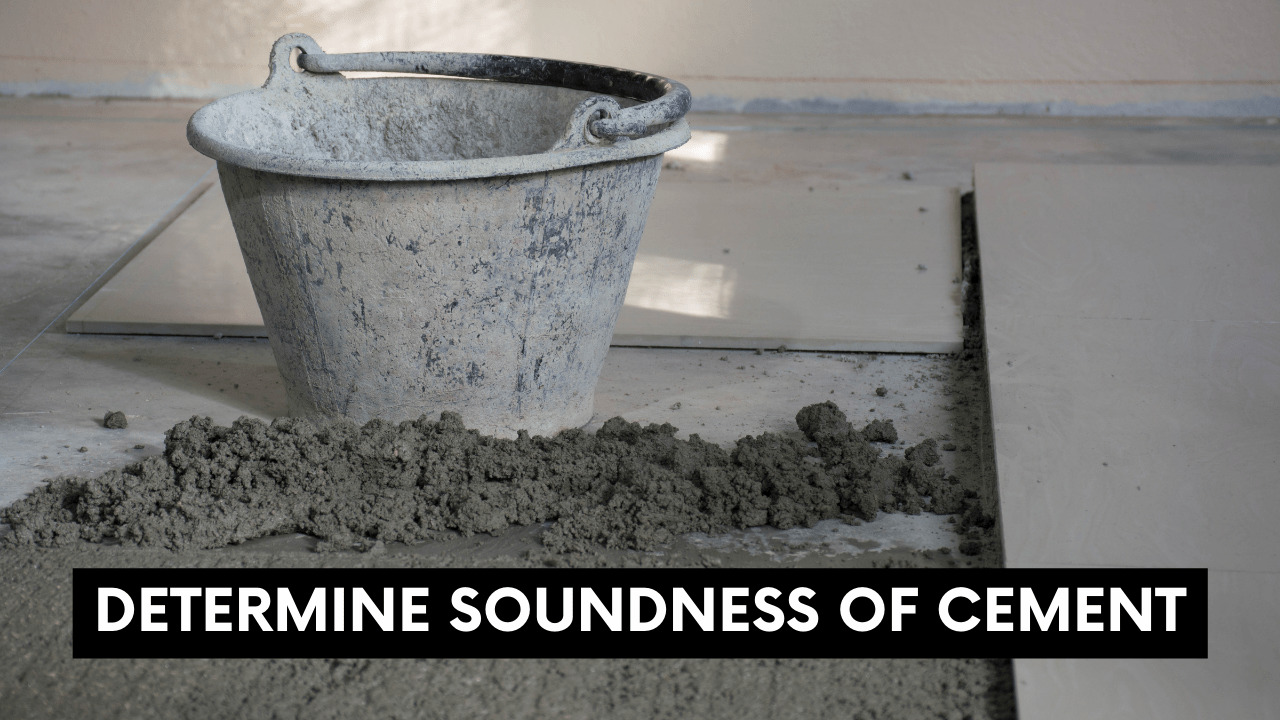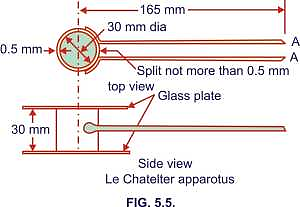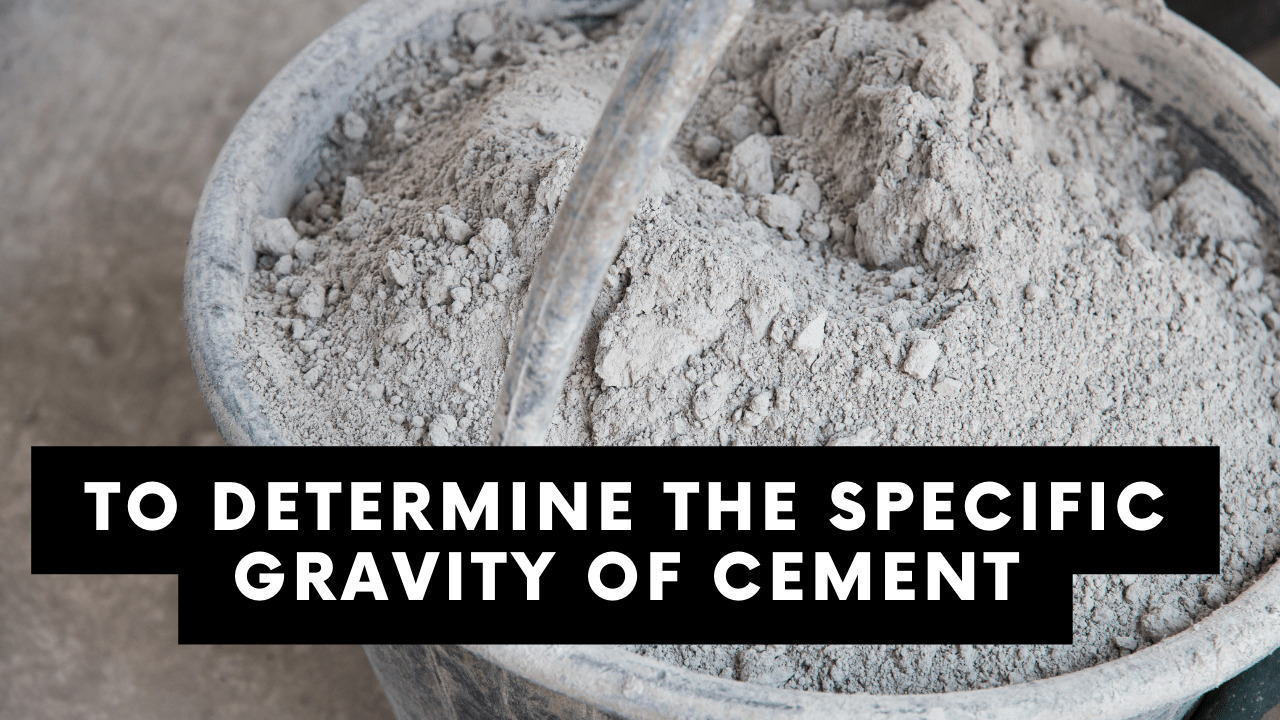Table of Contents
Standard Used
BS 196-3
Objective
The objective of performing this test is to determine the soundness of cement and to check if the impurities present in it exceed the limits imposed by the standard.
Related Theory
Soundness of Cement
The soundness of cement is its ability to resist a change in its volume when subjected to temperature or environmental permutations. Greater is the resistance offered by the hardened paste, greater is its soundness, and vice versa.
Contrarily, the cement that is incapable of resisting any volumetric alteration possibly contains an excess of hard burned free lime, magnesia, or calcium sulphate. Therefore, it is imperative to check for the soundness of cement through laboratory testing and check whether the results lie within the standard’s set limits.
Causes of Unsoundness in Cement
The following are the possible reasons that can contribute to the production of unsound cement.
- Improper crushing, grinding, burning, and mixing of the raw materials are likely to produce unsound cement.
- The presence of hard burned free lime in excess causes expansion of the cement because of delayed hydration reaction.
- The presence of magnesia in excess also has a retarding effect on the hydration process and causes slow disruption of the cement.
- An excess of calcium sulphate or gypsum can impart expansive properties to the cement in the long run.
Significance of Determination of Soundness of Cement
Unsound cement can be a possible source of cracking in the concrete. This is because if the cement does not resist appreciably to any external source provoking its volume change, the concrete gets prone to developing tensile stresses, leaving it at the fag end of its ultimate strength in tension.
Therefore, unsoundness in cement can have deleterious effects on the durability of concrete, and any laxity in attempting to determine the soundness of cement can have far-reaching consequences.
Methods for determining the soundness of cement
The soundness of cement can be determined in the laboratory using two methods as follows;
- The Le Chatelier’s method is used to identify unsoundness in cement caused by an excess of free lime.
- The Autoclave method determined unsoundness because of excess magnesia as well as excess lime.
Apparatus
- Le Chatelier’s apparatus, comprising a non-corrodible brass mold having a splitter, indicator needles, and glass cover plates
- Water bath, to regulate and control the temperature the mold is subjected to
- Weighing balance, to weigh cement and water
- Mixing tray, to mix cement and water to form a paste out of them
- Thermometer, to check for the exactness of test temperature as per the standard’s guidelines
- Humidity cabinet, to keep the mold in an environment of known relative humidity
Test Procedure
Test Conditions
- The temperature in the vicinity of the test environment should be 20°C with a permissible variation of ±1°C.
- The relative humidity of the cabinet in which the mold is to be placed should be greater than 90%.
Test Procedure
- Prepare a cement paste of standard or normal consistency.
- Oil the internal surface of the mold as well glass plate and place the mold over the plate.
- Without any delay, fill the mold with the cement paste using your hands, not compacting it.
- Level the top surface of the mold containing cement using a straight edge.
- Place the cover plate on the mold top and put the mold in the humidity chamber at 20°C for almost 24 hours.
- After 24 hours of curing, measure the distance between the indicator points and record the value as A.
- Heat the mold and bring it to boiling temperature within 30 minutes and maintain the water bath at boiling temperature for the next 3 hours.
- Measure the distance between the indicator points post boiling and record the value as B.
- Bring the mold back to room temperature and again measure the eponymous distance and record the value as C.
- The mathematical value of soundness is calculated using the following formula;
Soundness of Cement (mm) = C-A
- Repeat the above procedure to determine the average value of cement.
- In case the expansion value is par the limits set by the standard; a retest is mandatory. However, the retest is to be performed on stored cement rather than fresh cement.
Observations and Calculations
Amount of cement (gm.) =
Amount of water (mL) =
Consistency of cement (mm) =
| Obs. No. | A
(mm) |
B
(mm) |
C
(mm) |
Value of Soundness = C-A
(mm) |
Average Value of Soundness
(mm) |
| 1. | |||||
| 2. | |||||
| 3. | |||||
| 4. |
Symbols Used:
A = Distance between the indicators post-curing
B = Distance between the indicators post-boiling
C = Distance between the indicators after bringing the mold to room temperature
The permissible average value of soundness of cement is 5-7mm. If the determined soundness of cement exceeds the above range, a retest is to be carried out. If the sample falls short of soundness in the retest too, the cement is classified as unfit for use in construction activities and its chemical composition is to be revised or reconsidered.
Results
The average value of soundness of cement is mm.
Cement classification as per the standard =
Precautions
- While filling the mold with the cement paste, gently press the mold sides to prevent any opening of the splitter.
- While placing cement into the mold with hands, care should be exercised to not compact or compress the cement paste and prevent it from any external vibrations.
- The distance between the indicator points should be measured to the nearest 0.5mm.
- Care should be exercised while tackling the hot mold.
- The temperature and humidity values should be maintained as per the guidelines provided by the standard.
Discussion
- Greater is the difference between the measured distances before and after boiling, lesser is the soundness of the cement. This is because an unsound cement succumbs to volumetric change and this is conclusive from the measured distances.
- The value of soundness of cement indirectly dictates the number of impurities that disparage the cement’s acceptability as per the standard. The magnesia content in cement should not exceed 6%.








